For my first press trip ever, I was invited to Villa Saletta, a beautiful estate in the heart of Tuscany.
With a legacy that dates to the Etruscan times – the first written account of the estate’s winemaking can be traced back to 980AD – the estate consists of a medieval village (the Borgo), three villas, a winery that produces a range of high-quality wines, and 1700 acres of land that include olive groves, vineyards, woodlands and arable.
While the area was occupied by Etruscans in the seventh century, the name Villa Saletta seems to derive from the Lombard occupation: saletta comes from sala, which in Lombard meant ‘stately villa.’
The estate is currently owned by the Hands family, who have been restoring it, bringing back the tradition of an agriculturally diverse and self-sufficient property, with a focus on winemaking. Before them, it was owned by the Gamba Castelli (19th century), who inherited it from the Riccardi family, known for being the bankers of the powerful house of the Medici in Renaissance Italy. The Riccardi crest is painted on the walls of the villas, on the church, tower and Palazzo of the borgo, and can even be found on every bottle of wine produced in the estate. It was the Riccardi who transformed Villa Saletta into a working estate in the 16th and 17th century, and kept it thriving until their own fortunes started to decline. During the Second World War, when the Villas was occupied by the German and Italian armies, refugees were welcomed in the borgo, and the countess fed over 200 people a day with the estate produce.
THE PROPERTY: STAYING AT VILLA FAGNANA
October is usually colder in Italy, but as we were welcomed to Villa Fagnana (one of the three villas of Villa Saletta) the weather still felt like summer. Fagnana is a large and beautiful villa located in the heart of Saletta, with its own swimming pool and rooms to sleep a maximum of fourteen people. The accommodation is divided into the main house and the ‘limonaia’ annex, which has a double room with ensuite bathroom. The kitchen and large, beautifully lit living room lead to an open terrace where we had our first meal, surrounded by trees and birdsong. In the evenings, we sat in the dining room inside, enjoying delicious meals cooked by chefs Giacomo Petri from Happy Jack Chef and Marco Maccanti from Papaveri and Papere Restaurant: from millefeuille of chickpeas and codfish, to pasta with black cabbage and risotto with radicchio and goat cheese. As the sky turned crimson then dark and the land grew quiet, we enjoyed glasses of wine from Saletta and exchanged stories with the other journalists and writers and lovely Sharon, who organized the entire press trip and took care of us every step of the way.
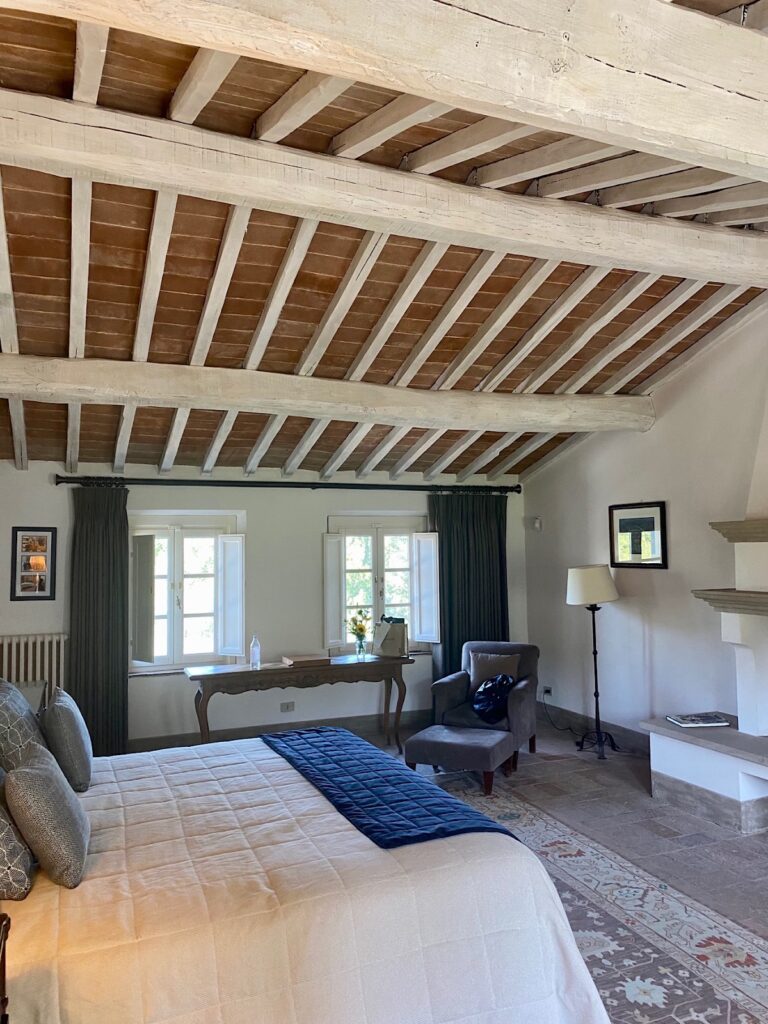
My room in Villa Fagnana, overlooking the Tuscan countryside
 Evening in Villa Fagnana
Evening in Villa Fagnana
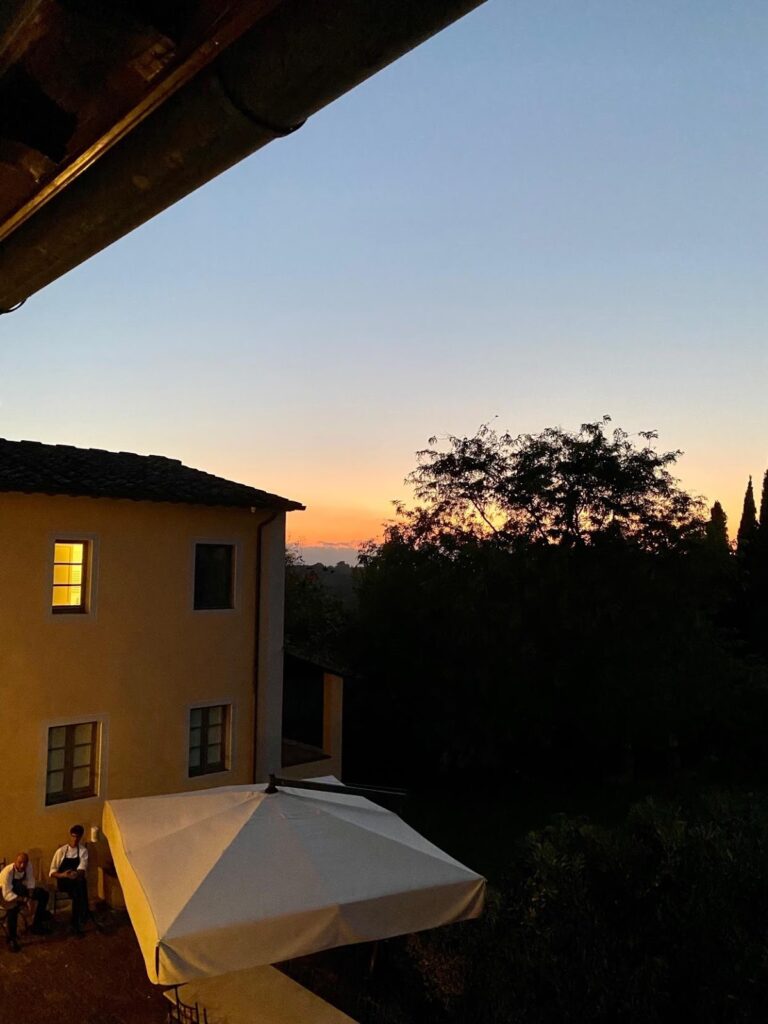 Sunset in Villa Fagnana
Sunset in Villa Fagnana
Fagnana is one of the three villas of Villa Saletta, the other two being Villa Valle and Villa Casolare. All three houses can be rented separately, or all together. While Villa Fagnana stands higher on the hills, with a view on the countryside below, Villa Valle is a traditional Tuscan farmhouse that has been lovingly restored, keeping the wooden beamed ceilings and terracotta floors. Even bigger and more spacious than Fagnana, it is divided into the main house and a smaller annex which used to be a hayloft and now hosts two bedrooms and bathrooms. The main house has a large living area and kitchen, a sunroom with a pool table, a terrace with a swimming pool and lovely gazebo with a barbecue area.
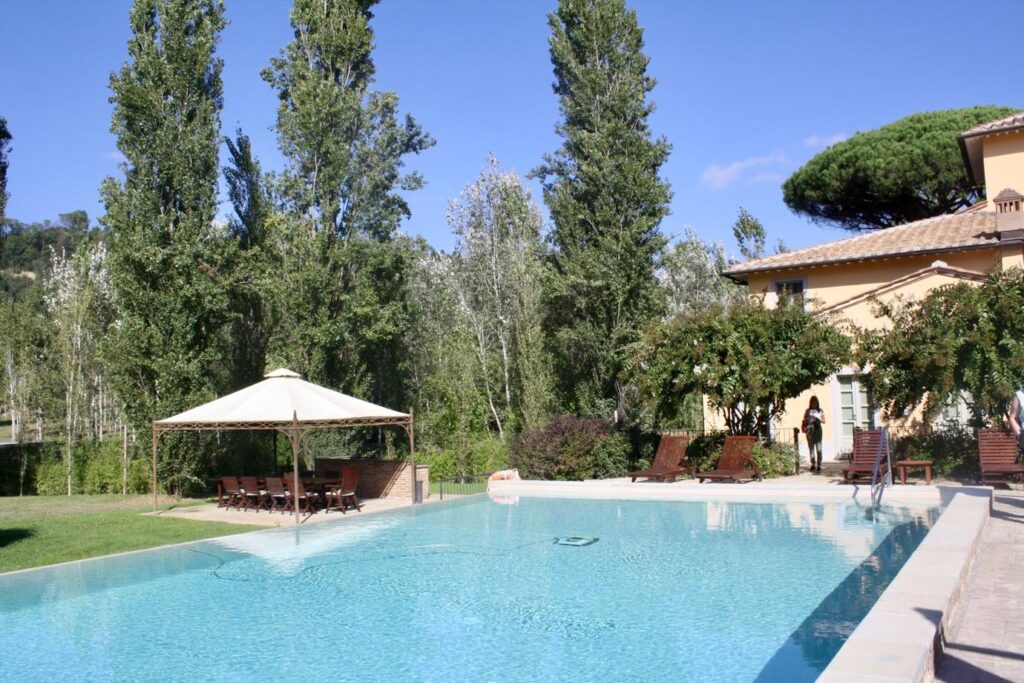
The swimming pool at Villa Valle
Villa Casolare is smaller and looks like it’s taken straight out of a fairy-tale. It sits in the middle of the woods, in a quiet and shaded spot. Divided over three floors, it has three bedrooms with ensuite bathrooms, with a master bedroom whose hand painted wardrobe reminded me of Venetian style cabinets. The villa sleeps a maximum of six people and can be reached by foot from Fagnana.
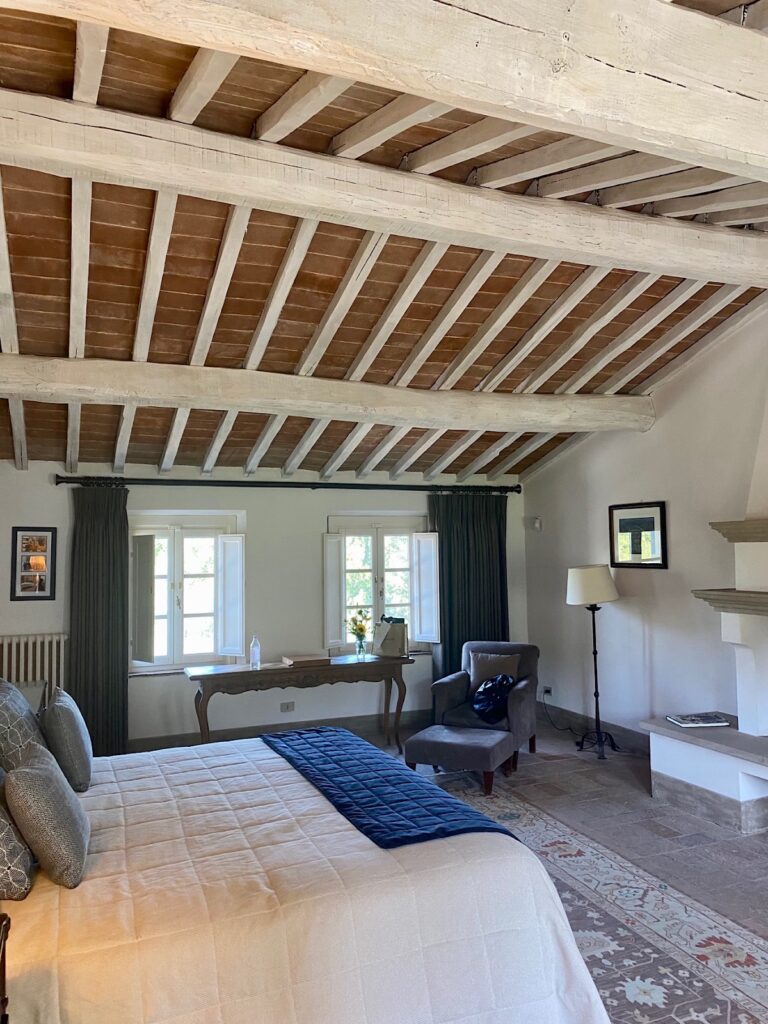
The Master bedroom in Villa Casolare
COOKING CLASS
On the second day of our press trip, we enjoyed an Italian cooking class with Erika from Cuoche in Vacanza, followed by a wonderful dinner with the food we had prepared. The focus was on making fresh bowtie pasta, with a sauce of caramelized tomatoes, but we also prepared our own tiramisu, turkey with soffritto and a small parmigiana. Erika was incredibly enthusiastic and patient, and was attentive to everyone’s needs, making sure to include a gluten free and a vegetarian option. The attention to detail was astonishing, and we spent an evening learning the secrets to handmade pasta and mascarpone cream, how to caramelise the tomatoes, and which wines to pair with each dish.
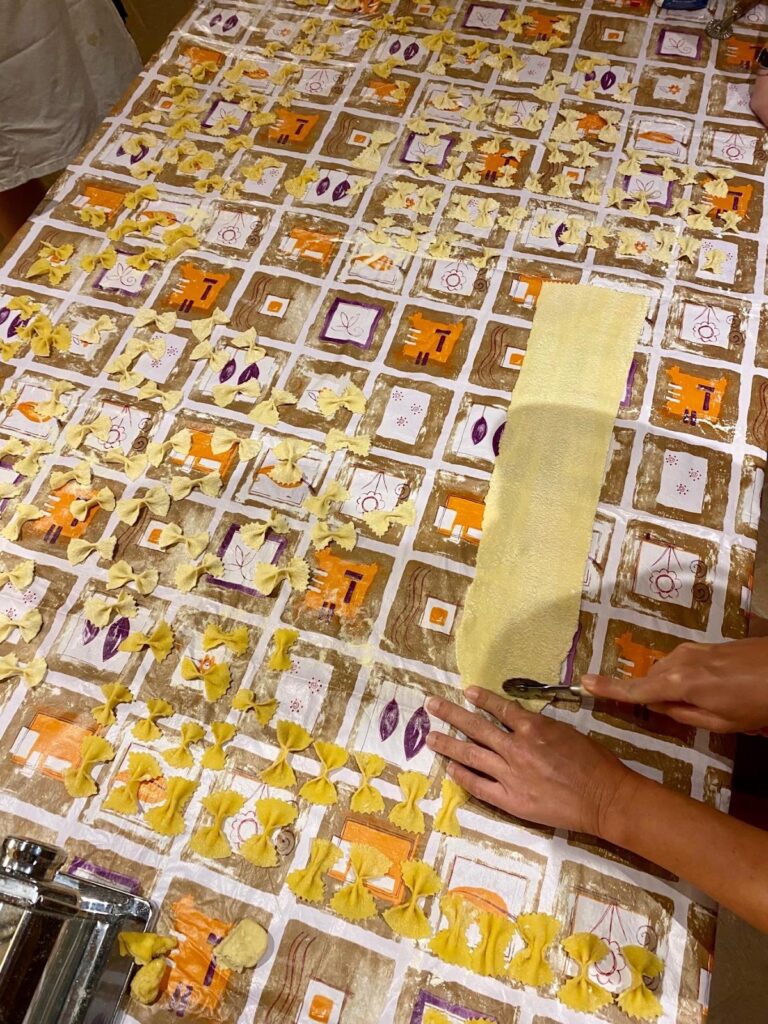
Making bowties from scratch
WINE TASTING
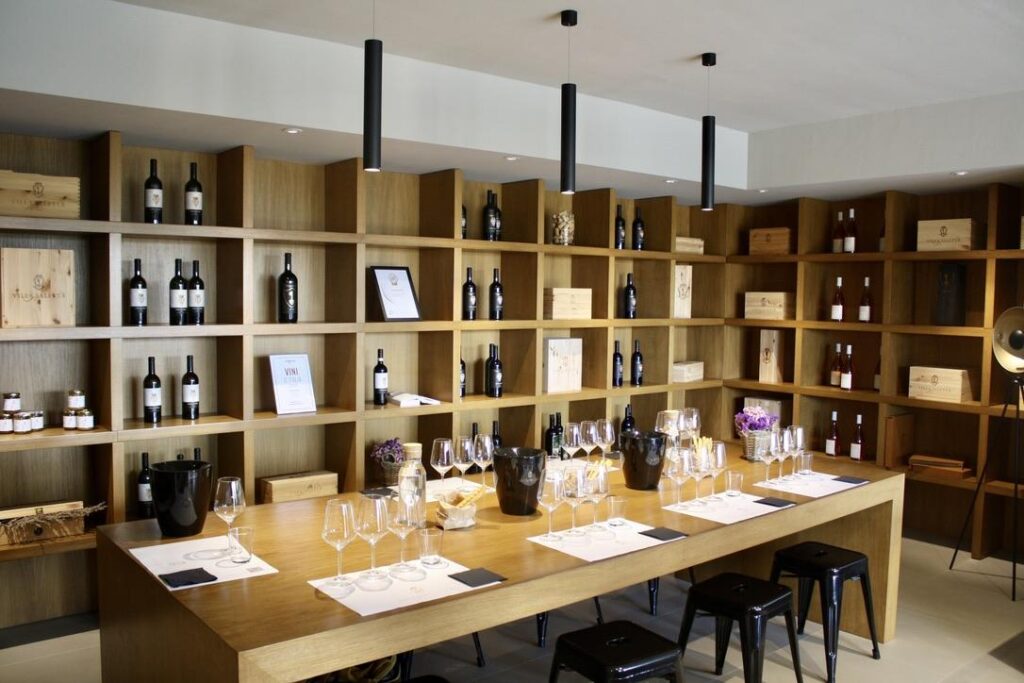
The wine tasting experience
A visit to the Villa Saletta vineyard and winery was one of the most important stops of our trip. The lovely Daria (Hospitality) took us on a tour of the estate, showing us the most scenic views of the vineyard––sun glinting on the grape-bearing vines, hills of golden and emerald stretching into the distance. The Villa offers picnics at sunset here, and I honestly can’t think of anything better.
A wine tasting experience followed, where we tried three different wines from the estate: the Saletta Riccardi, which has a bold taste, is bright ruby in colour, and has aromas of leather and tobacco; the Chianti, fresher, smoother, with floral notes and hints of red fruit and vanilla; and the Rosé, my personal favourite, which started as an experiment for the estate in 2013. All wines in the estate are curated by head wine-maker David Landini, who, as Daria explained, is passionate about honouring tradition and respecting the environment as well as understanding the landscape to enhance the quality of the product.
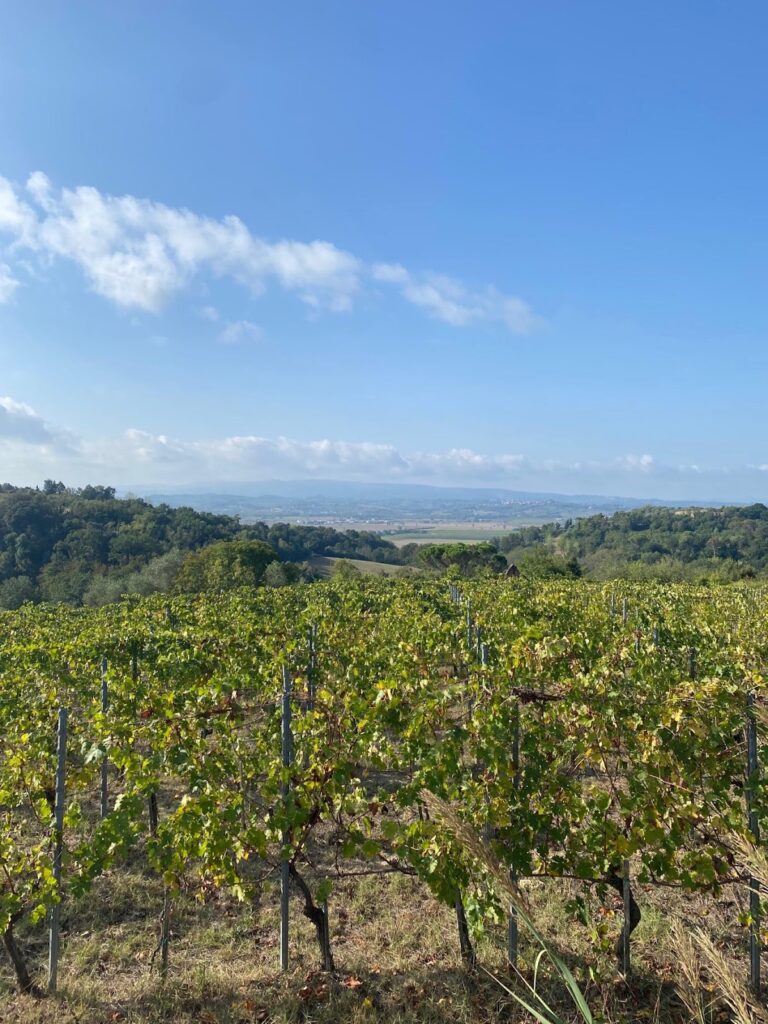 The vineyard
The vineyard 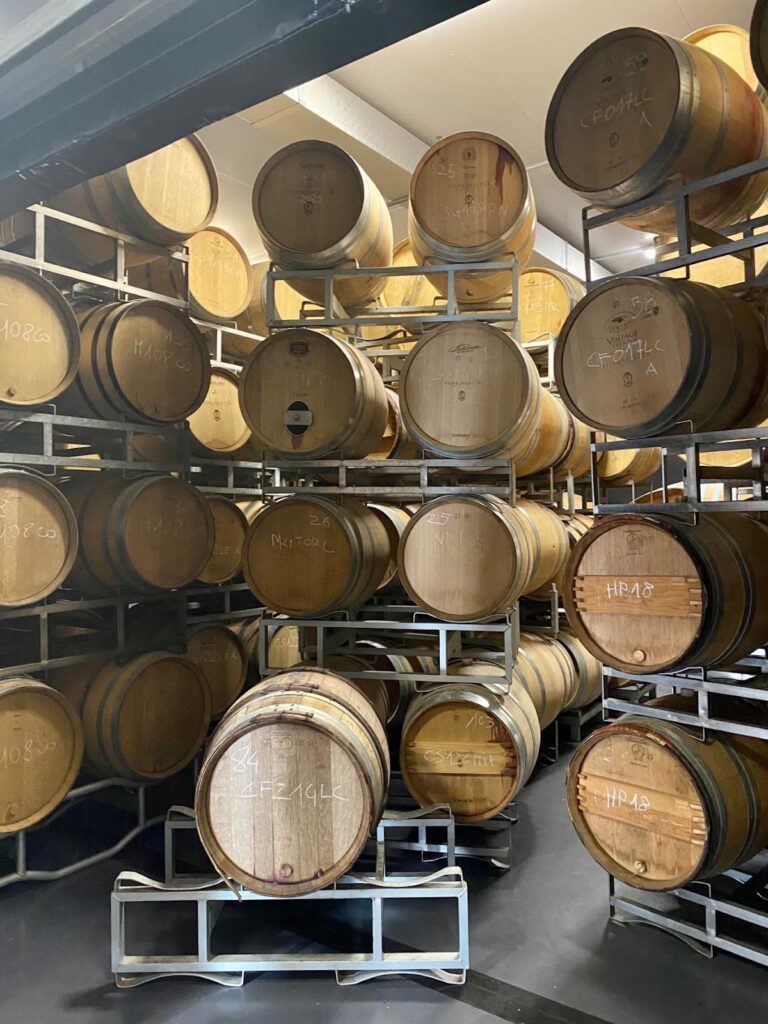 Barrels of wine at Villa Saletta
Barrels of wine at Villa Saletta
TRUFFLE HUNTING
Another highlight of the trip was truffle hunting with Teo from ‘I Tartufi di Teo’, an organic farm born in 2009, after the renovation of an old cottage property. Teo hunts and sells truffles with his father and cousin, as well as twelve beautiful dogs. They made their passion for truffles into a real business, and produce organic truffle in their small, homey workshop, pairing it with raw materials from the territory. As Teo explained, they have three kinds of truffles: the ‘bianchetto’, called marzuolo because it reaches its peak in March; the tartufo nero estivo, black truffle from summertime, which grows between May and October and is called scorzone because of the scorza, a layer of protection that helps the truffle keep the moisture inside; and finally, the white truffle, tartufo bianco pregiato. Because of the dramatic change of temperature, Teo and his family are now still hunting black truffles rather than white, and they have to go deep in the forest to find them, as the past few years saw a dive in production because of a decrease in moisture.
Teo introduced us to Bianca, a one-year-old English setter, and told us that all of their dogs are trained to smell and eat truffle from the moment they are born. Then we set to find some truffles. We learned that moon affects the maturation of truffles, that wild boar is their biggest enemy (because it ruins the roots around the truffles), and that Bianca and all of Teo’s dogs only sniff truffles that are ready to be picked: truffle has a very specific life span as in 10 days it becomes rotten.
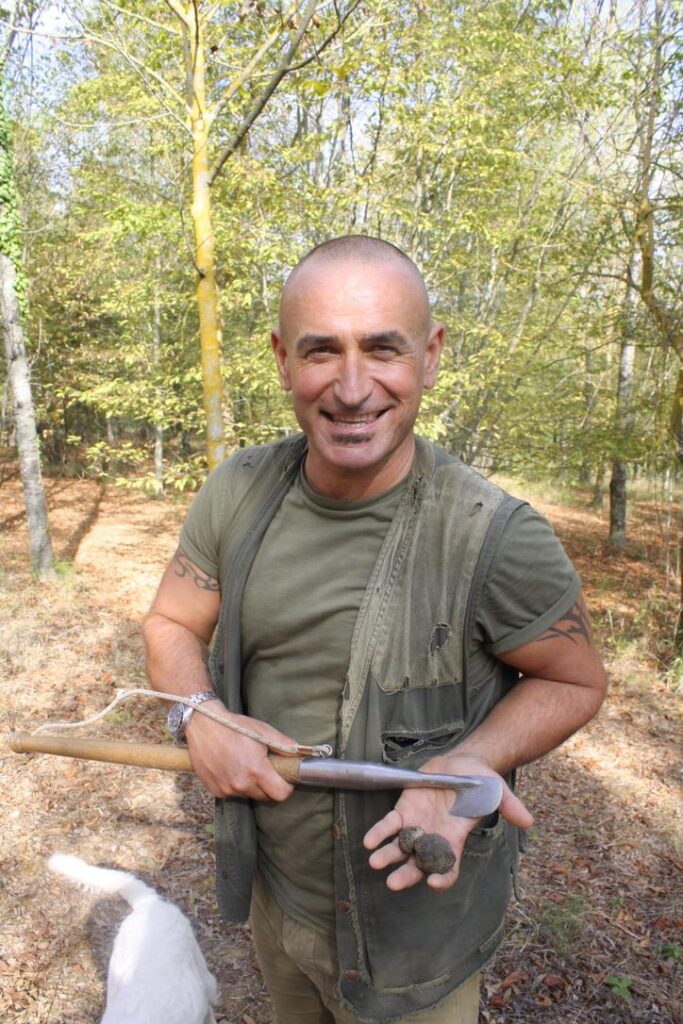
Teo and the truffles

Bianca being protective of her truffle
With Bianca’s unwavering help, we found four truffles. Bianca wasn’t eager to let them go, and even use her paw to protect the truffle from us, but eventually we went back to the farm, and Teo and his family cooked us lunch while we stayed outside and cuddles the other dogs.
Our whole meal was truffle based, with appetizers like polenta topped with fresh truffle, pumpkin cream and truffle, and bruschetta. These were followed by gnocchi with butter and truffle (delicious), and a vanilla ice cream dipped in acacia honey made with white truffle. I left the farm with a bag of products to cook at home, including their delicious white truffle butter (recommended as a base for bruschetta), the organic acacia honey made with white truffle (perfect with cheese as well as desserts like panna cotta) and the truffle virgin oil paired with some handmade tagliatelle.
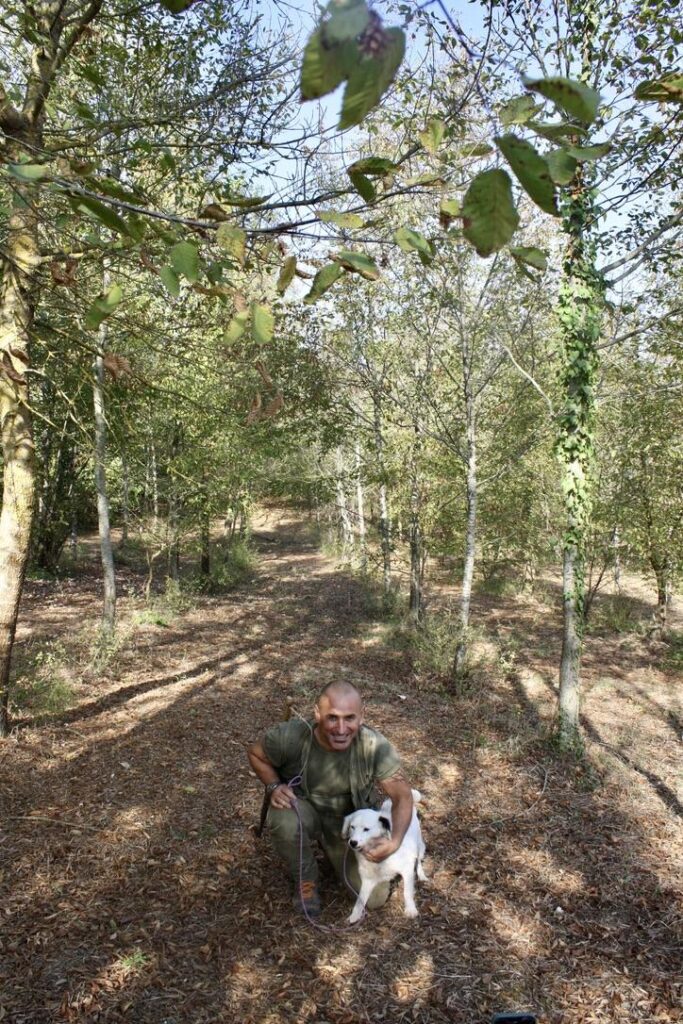
Teo and Bianca together
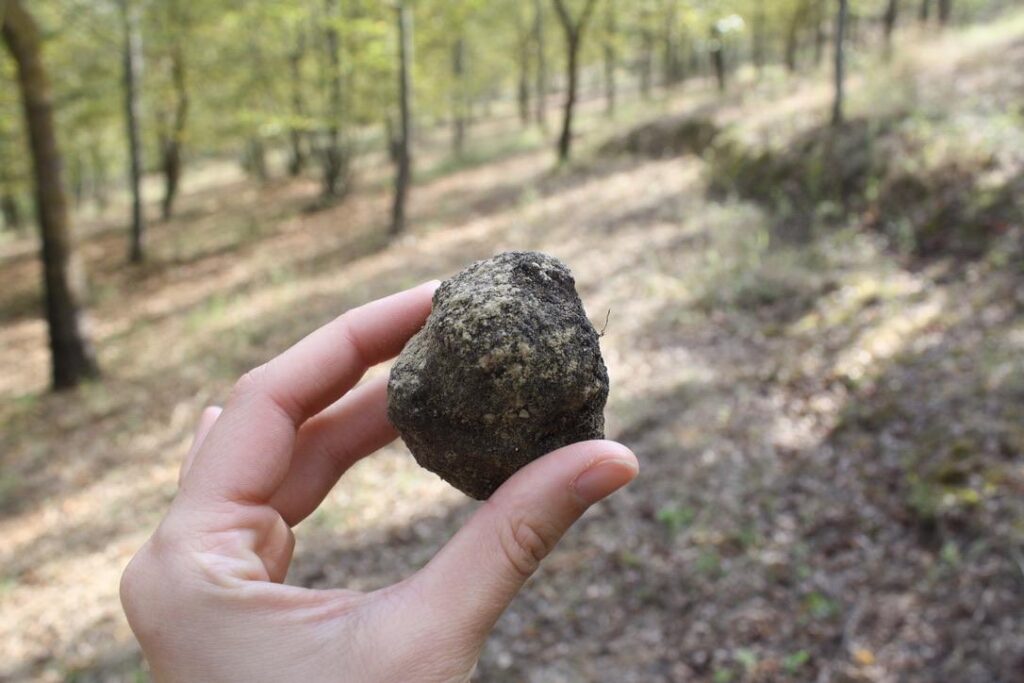
One of the truffles we found
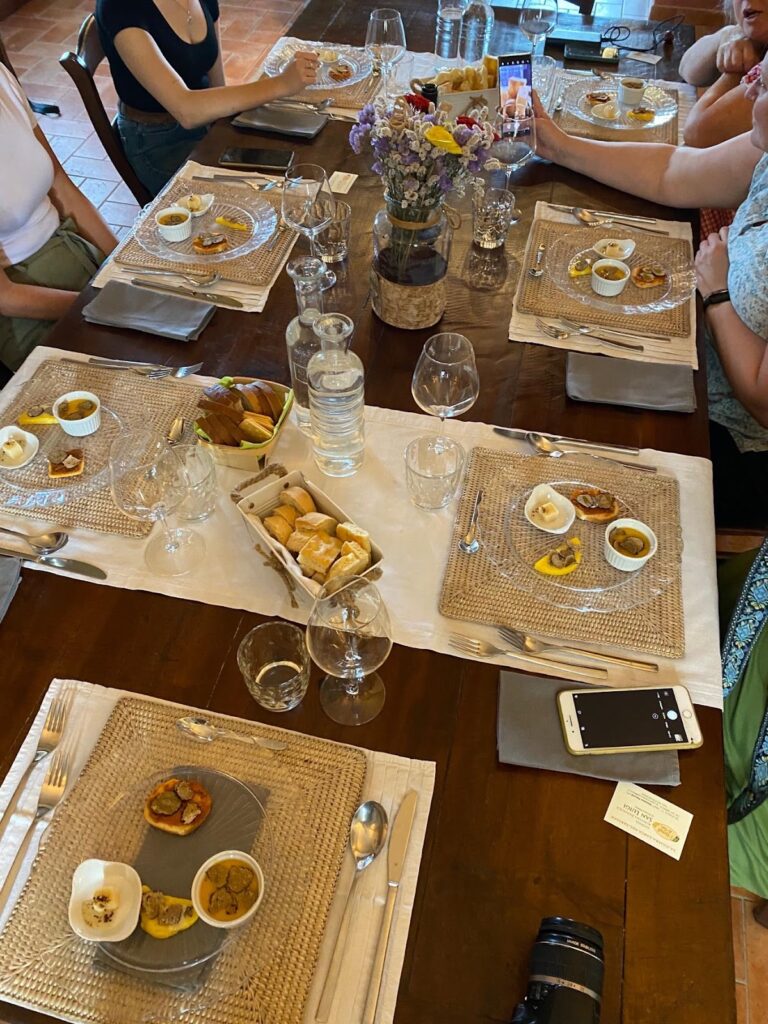
Our lunch at the farm––the appetizers
Visiting Villa Saletta was a unique experience, perfect for people who are looking for an Italian getaway, but want to avoid spots that are too crowded with tourists. Gentle Tuscan hills, amazing food, plenty of activities to offer, and a location that is close to some of the most beautiful Italian towns and cities: Siena, Pisa, Lucca, Volterra, San Gimignano, and even Florence. If you’re looking to spend some quality time in Tuscany at Villa Saletta, whether to recharge, to uncover unique local cuisine and wine, or to discover more about Italian history and heritage, check out https://villasaletta.com/
More links on the services and experiences mentioned available here:



